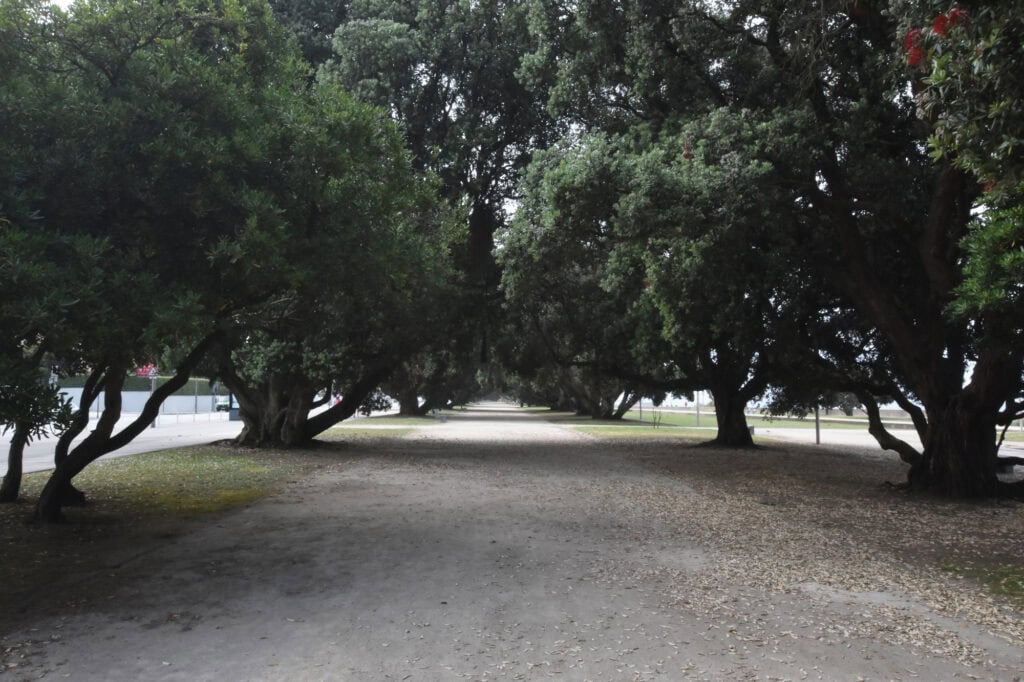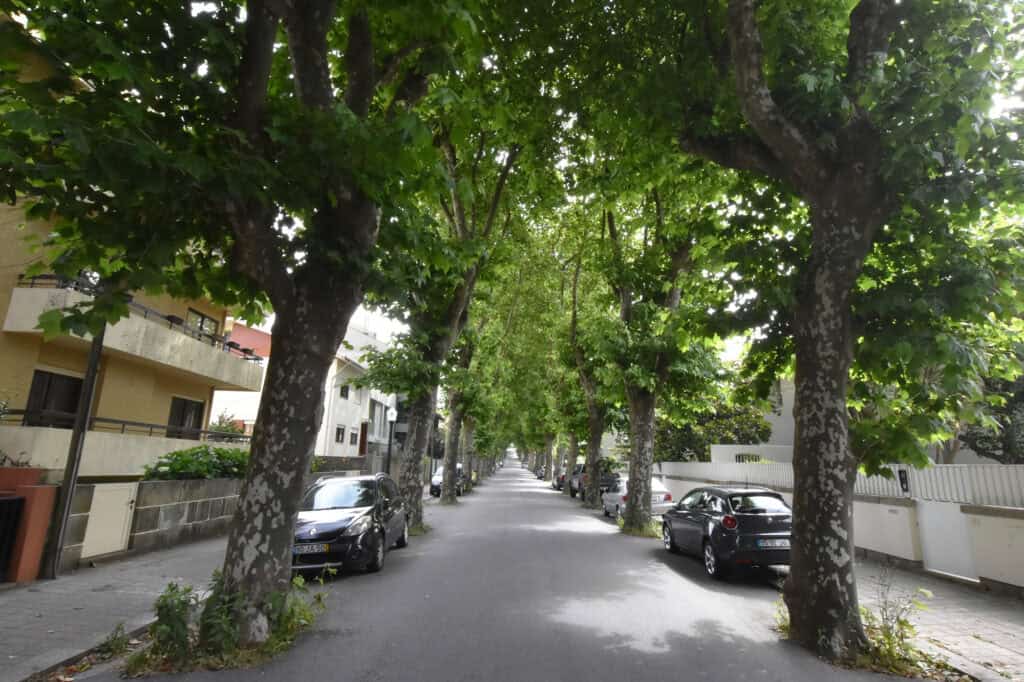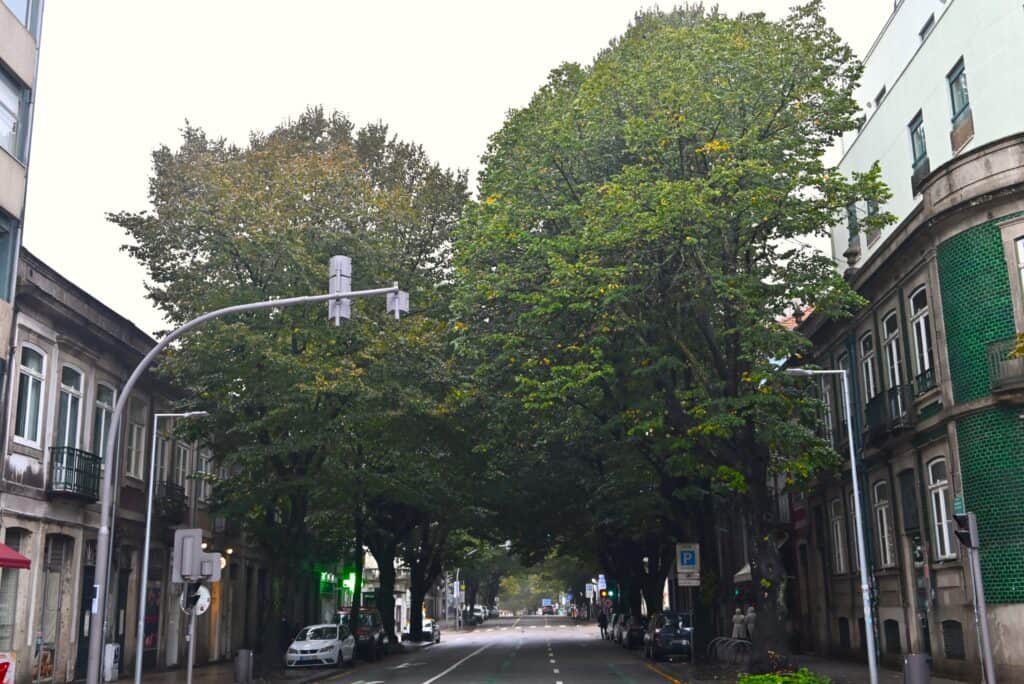The tree line on Avenida de Montevideu, in Foz do Porto, combines aesthetics, functionality and adaptation to the coastal environment. Made up of 82 classified trees, predominantly of the species Metrosideros excelsa (known as the fire tree), this tree cluster is considered one of the most emblematic in the city. Originally from New Zealand, the Metrosideros excelsa is characterised by its resistance to salinity and wind, making it a suitable tree to be kept in an environment close to the sea.
As part of Porto’s Atlantic Front, the Avenida de Montevideu tree line forms a green corridor that connects the building to the coastline, acting as a natural barrier against wind and sea breeze. It also contributes to the thermal regulation of the area, providing shade and improving air quality. In addition, between May and July, its intense red blooms attract pollinators such as bees and birds, thus contributing to the preservation of local biodiversity.
This alignment is part of the Plano de Arborização do Município do Porto, which aims to materialise and enforce a vision of a more refined and programmatic Municipal Ecological Structure, set in a context of valuing trees and the multiple benefits they provide to citizens, the environment and public space, not forgetting the increase in the city’s resilience and climate adaptation.
The tree pits have also undergone intervention through the ‘Caldeiras Vivas’ project, which aims to occupy the tree pits with mostly native species to combat pests and boost biodiversity.



